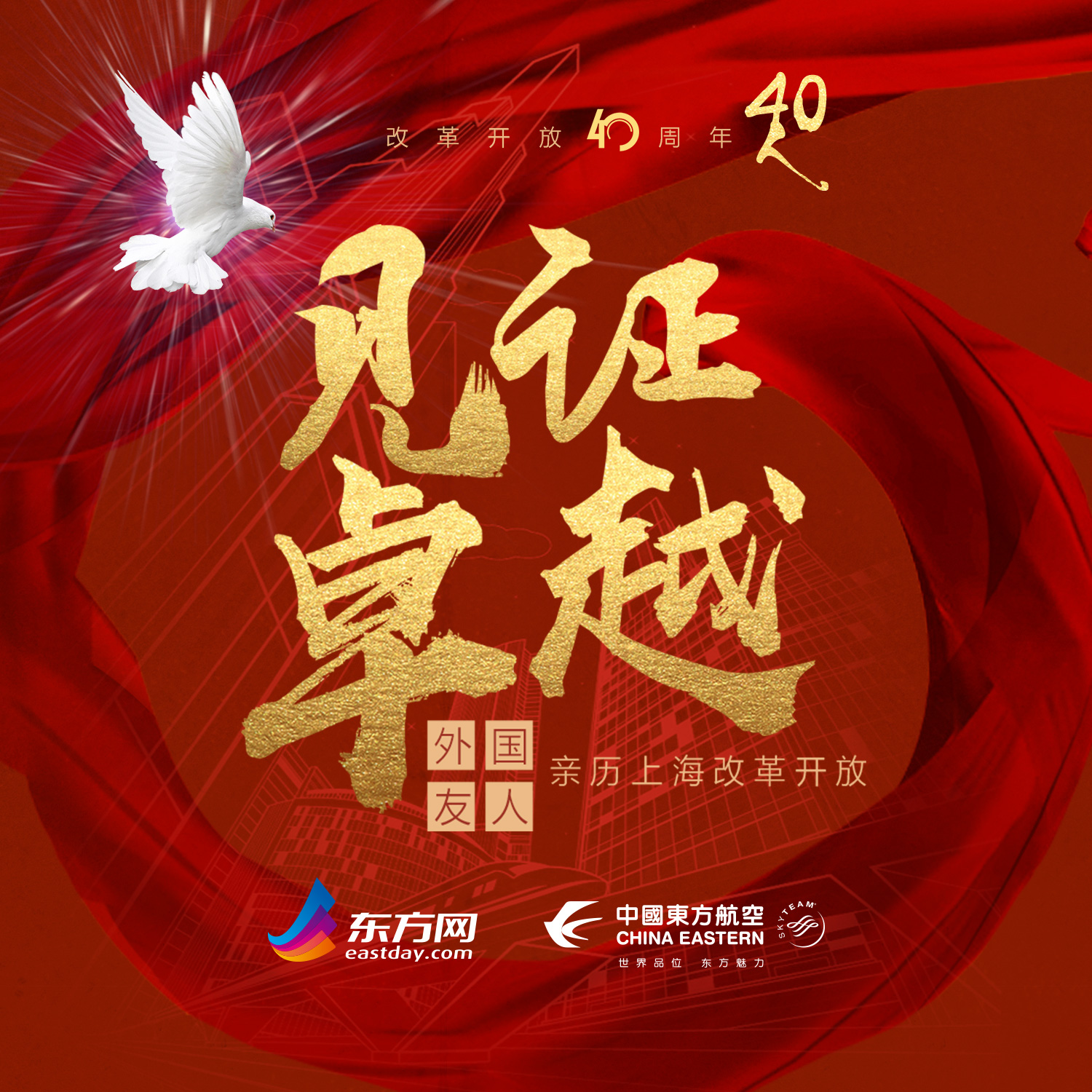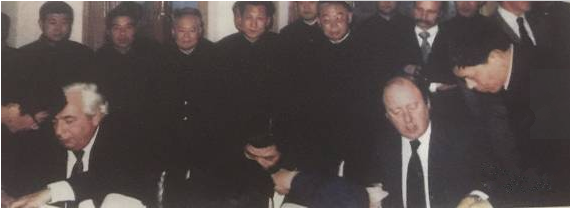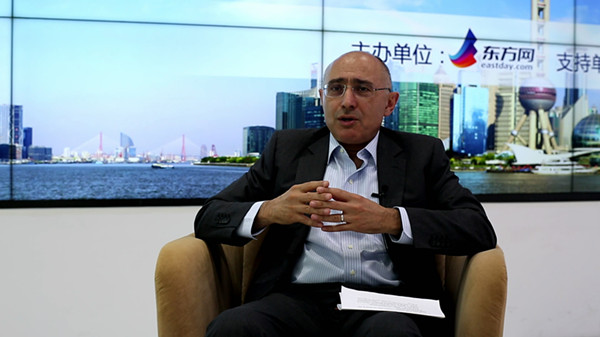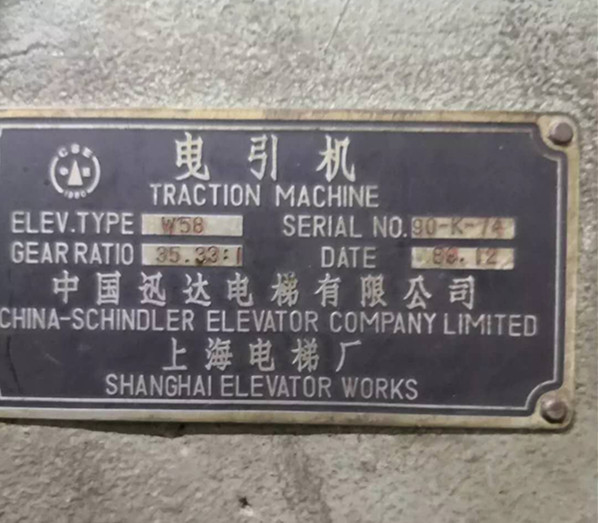



english.eastday.com
Zheng Qian
2018年8月21日 09:07:15
The third Plenary Session of the 11th CPC Central Committee was the prelude to China's economic reconstruction, reform and opening up. With the promulgation of the Sino-foreign Joint Venture Law in 1979, China ushered in the first batch of Sino-foreign joint ventures, including Beijing Air Catering Co., Ltd., Xinjiang Tianshan Wool Tex Stock Co., Ltd., Beijing Jianguo Hotel, and Beijing Great Wall Hotel. Schindler, named after its founder, Robert Schindler, was also one of them. In 1980, Schindler, which is headquartered in Lucerne, Switzerland, established China-Schindler Elevator Co., Ltd.(China Schindler), China’s first industrial joint venture, and also the first joint venture in Shanghai.
A historical story of a pioneer
In the era of China’s planned economy, there were eight elevator factories in China designated by the Ministry of Housing and Urban-Rural Development, including the Shanghai Elevator Factory and Beijing Elevator Factory. The Shanghai Elevator Factory was located in the former Pengpu Industrial Park of the former Zhabei District. With a strong technical foundation and production potential, in the 1970s it could produce more than 60 varieties of automatic elevators, escalators and moving walkways. Although a leading company in the industry, it still fell behind advanced international counterparts.
At that time, the Swiss Schindler was already the world's second largest elevator company. Uli Sigg, who was in his early thirties, was the representative of the company in China. Being quite optimistic about China's potential elevator market and geographical advantages, he facilitated the birth of the joint venture between Schindler Group and Chinese side.

In 1980, China Schindler was established in Beijing as the first industrial joint venture in China. The third person from right is Uli Sigg, the largest collector of Chinese contemporary art and former Swiss Ambassador to China. He joined Schindler in 1977 and facilitated the birth of the joint venture. He was also the general representative of the Swiss Pavilion at the 2010 Shanghai World Expo.
However, many people thought Uli was insane to carry a Sino-foreign project out in China, as it was then an adventurous idea to involve foreigners in China's reform and opening up. However, Uli persuaded the Chinese government with an adventurous spirit that the market economy had its own advantages.
Uli was personally responsible for negotiations with the Chinese side, which were conducted in Beijing. In the course of promoting this joint venture project, Uli had to fly 18 hours to Beijing and stay in China for two or three weeks at a time. In each negotiation, there was a Chinese delegation of more than 25 people who would smoke during discussion to seek consensus. Every time he left China, he would wait until the aircraft door closed to breathe a sigh of relief, because he could be called back at any time to continue negotiating non-agreed issues before boarding.

On March 19, 1980, the China Construction Machinery Corporation, Swiss Schindler and Hong Kong Jardine Schindler signed a joint venture agreement in Beijing.
Thus, after more than half a year of negotiations between the two sides, on March 19, 1980, the first industrial Sino-foreign joint venture agreement in China's machinery industry was signed in Beijing. On July 4, 1980, China Schindler was formally established, with the Chinese side taking a 75% stake (paid with plants, equipment and the inventory of the Shanghai and Beijing Elevator Factories), and the foreign sidetaking a 25% stake (Swiss Schindler 15%, Jardine Schindler 10%, paid with cash).
This triggered a wave of foreign investments in China's elevator industry. More importantly, the beneficial and fruitful joint venture exploration between Schindler and Shanghai Elevator Factory provided a convincing blueprint for many Sino-foreign joint ventures in the future.
More than 30 years’hard work in China
Moving on to the subject of today’s interview, Daryoush Ziai, the incumbent CEO of Schindler China, talked about his company’s history in China with a sense of pride. “At the time, the Schindler Group and Mr. Schindler had this foresight and also the entrepreneurship to realize that China is going to be one day a very significant market, so very early on, he decided to make an investment in China and bet on the future growth of this very important market.”

Daryoush Ziai receives an exclusive interview with eastday.com
In his view, China's reform and opening up, especially urbanization and real estate development, has brought huge opportunities to Schindler. By the beginning of this century, China had not only developed into the world's largest elevator market, but also possessed the world's strongest elevator production capacity. It is truly the world's factory and greatest consumer market for elevators.
“Today, China represents 60% of the global market in new elevators and escalators. We’re now beginning to see a wave of modernization-- overhauling and modernizing the equipment that was installed maybe 15 to 20 years ago. Now, maintenance, quality, safety, all these things are becoming more and more important, and give rise to a strong service operation, modernization and renewal,” he added.
He introduced that since Schindler Group decided to make China one of its business centers, China has become its “second planet”. Schindler has been very active in infrastructure projects in China, like airports and metro lines. A number of the company’s customers in China over the last few years have expanded their business to other countries in Southeast Asia and Africa to participe in the “Belt and Road” initiative.

Escalator assembly line of China-Schindler Elevator Co., Ltd. [Photo/Xinhua News Agency]
Over the past 40 years, thanks to freedoms brought about by China's reform and opening up, the two sides of this joint venture have made great achievements in China by making progress through mutual cooperation and constant optimization of business decisions.
After Schindler transformed into a sole proprietorship on the Swiss side in 2006, it chose to build the Jiading Schindler City in Shanghai in 2011, which has become the production headquarters factory and the largest production base and industrial park of Schindler in the world. The original Shanghai Elevator Factory, as part of China Schindler, was scaled down to become Schindler Shanghai branch.
Whether it was the original Sino-foreign joint venture or today's wholly foreign-owned enterprise, Schindler has made an indelible contribution to Shanghai's urban construction. In 1985, China Schindler produced China's first microcomputer-controlled AC speed-regulating elevator for Shanghai Yan'an Hotel and other customers. In 1988, China Schindler designed China's first computer-controlled DC high-speed elevator, installed in Shanghai Union Building and other companies. In 1992, the Shanghai Elevator Factory of China Schindler developed the first domestic diamond-shaped sightseeing elevator, installed in the Shanghai Electronics Building. In 1998, the Schindler Asia-Pacific Training Center was established in Shanghai. Today, Schindler is everywhere, from Shanghai World Expo venues to Shanghai North Bund Magnolia Plaza, the Bund Financial Center, Shanghai Shipyard and Shanghai metro lines.

The Song of China-Schindler, the company song,describes active production activities of this joint venture in the 1980s and 1990s in the tide of reform and opening up

A machine nameplate of the China-Schindler Shanghai Elevator Works
As a pioneering Swiss enterprise investing in China, Schindler has also played an important role in Sino-Swiss relations and economic cooperation. As early as November 1986, Pierre Aubert, the then Vice-President of the Swiss Federal Council visited China and paid a special visit to the Shanghai Elevator Factory owned by China Schindler. He highly praised the enterprise as a "successful example of cooperation" between China and Switzerland.
Enduring tie with China
As CEO of the company, Daryoush Ziai himself also has a close relationship with China. He said that though he first came to China in 2006, his father came here in 1971, when he was a little boy.
“I was born in Iran, and at the time Iran was a kingdom. In 1971, the king decided that he wanted to reestablish the relationship with China and my father came and lead a delegation to meet with some government officials in China. He spent ten days here and took many photos. When he came back, he told me a lot about China. Since then I was very interested to come and see China.”
“It took a long time before I came. I wish I had the earlier opportunity to come and experience China for myself,”said Daryoush with a smile.“I remember seeing a picture he took in Beijing looking down Chang’anjie (Chang'an Avenue); there was a sea of bicycles, a few buses, old buses. Today it’s a sea of cars, and a few bicycles. But it looks so different. Interestingly enough, Tian’anmen Square today is full of people, [there were] not so many people there. Same with the Palace Museum. For clothing, everyone almost worethe same clothes, a gray color, today the young people’s clothing is already quite international. The transformation is incredible.”
In 2006, before he joined Schindler, Daryoush Ziai visited China on business trips many times as General Manager of Carrier Asia. He was dispatched to work in China in 2010 and has stayed here ever since. He brought his parents here in 2007. “My father told me about what he saw back in 1971 in Shanghai People’s Square and Beijing’s Palace Museum. I also got to hear from him what it was like in China. But I remember seeing pictures of China back in 1971, and I must say it’s not the same world.”
He commented that China’s achievement in the 40 years would not have been possible without reform and opening up. “I think along the way, there have been ups and down and challenges. I have always been so impressed by how the government of China has managed to overcome those challenges. They have taken some difficult decisions but continued on the path.”
In his view, as the climate has changed, China is transforming its focus from plain economic growth. As far as manufacturing is concerned, he pointed out that to move to higher technology and more value added products and services is the only way to go for Chinese enterprises. “Because as the standard of living has gone up, the cost has also gone up in China. So in order to stay competitive, products have to be of higher quality, higher technology and more value-added. So the investment goes into this area. There is a transformation going between pure manufacturing, maybe lower value added manufacturing to higher technology, more research and development and more innovation. This is the right thing. And it is normal to see this happening.”

Daryoush’s expectation of China to deepen its reform and opening up
He finally wrote down his expectations for China's deepening reform and opening up, praising China for being an engine of global growth. The development of innovation and technology will not only benefit China itself but also the world.